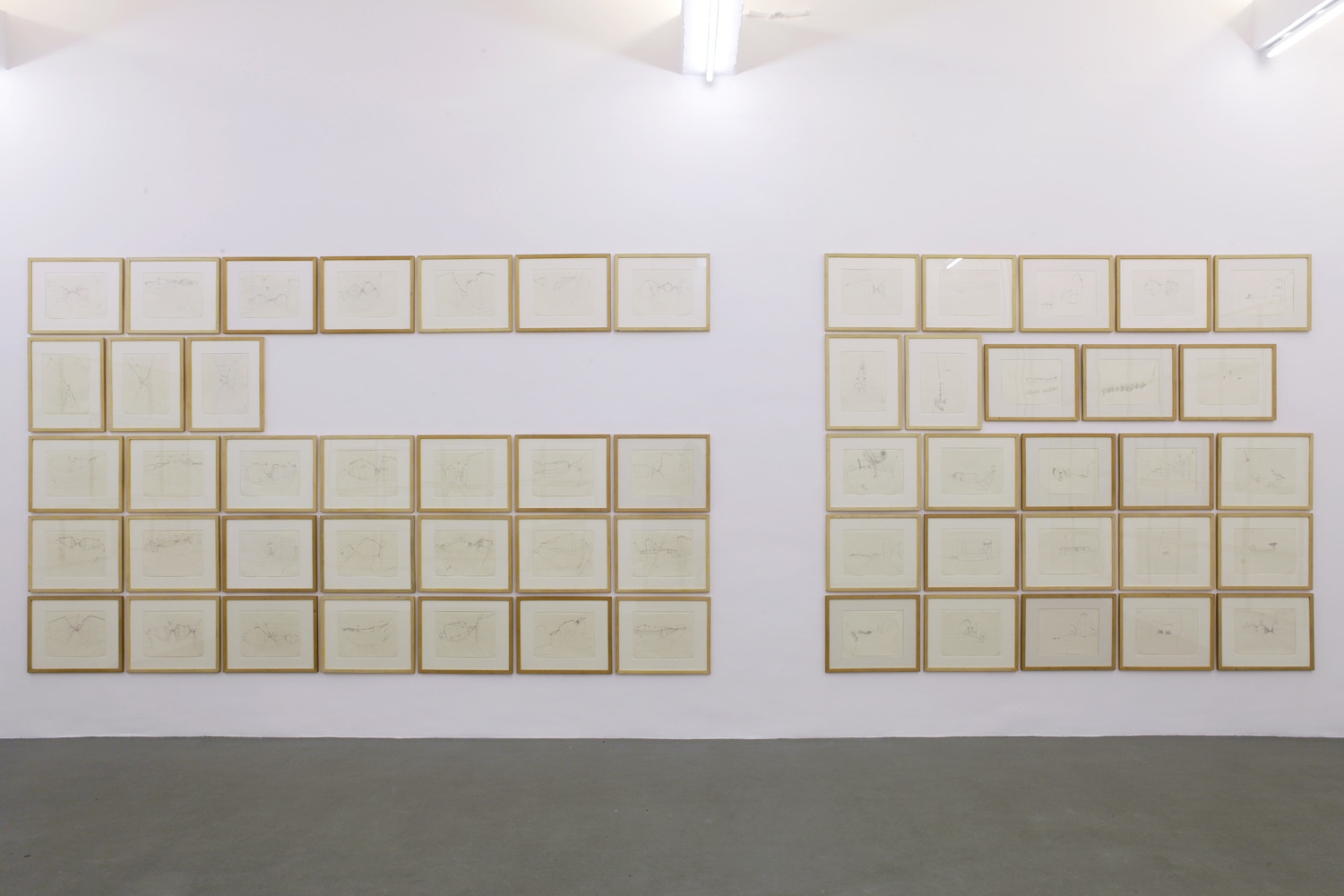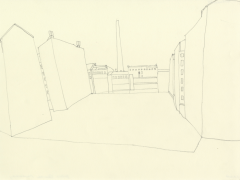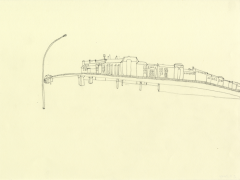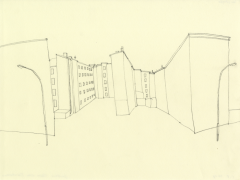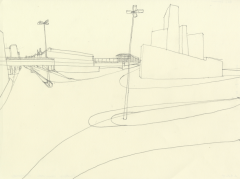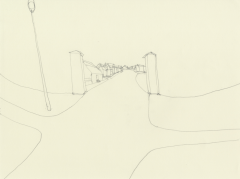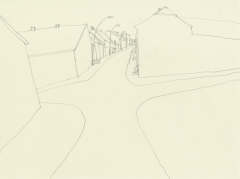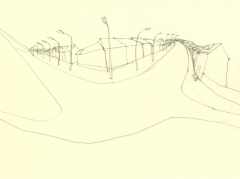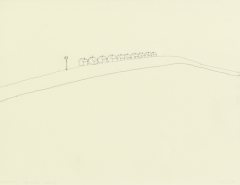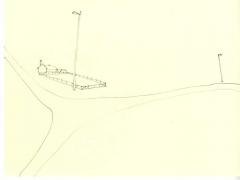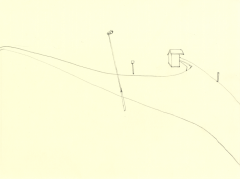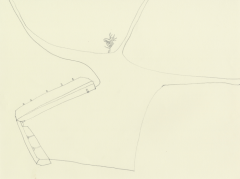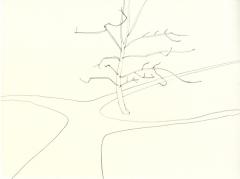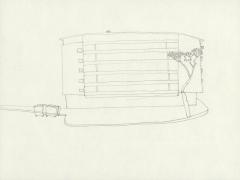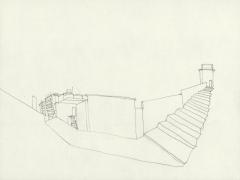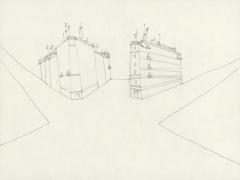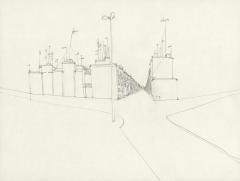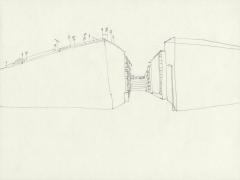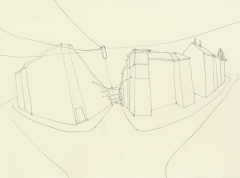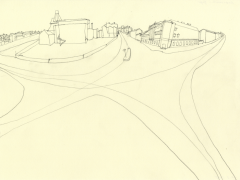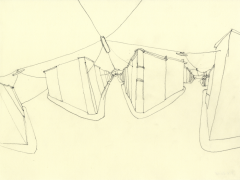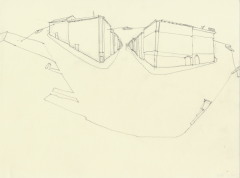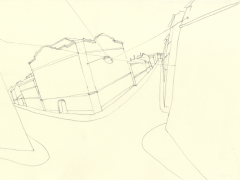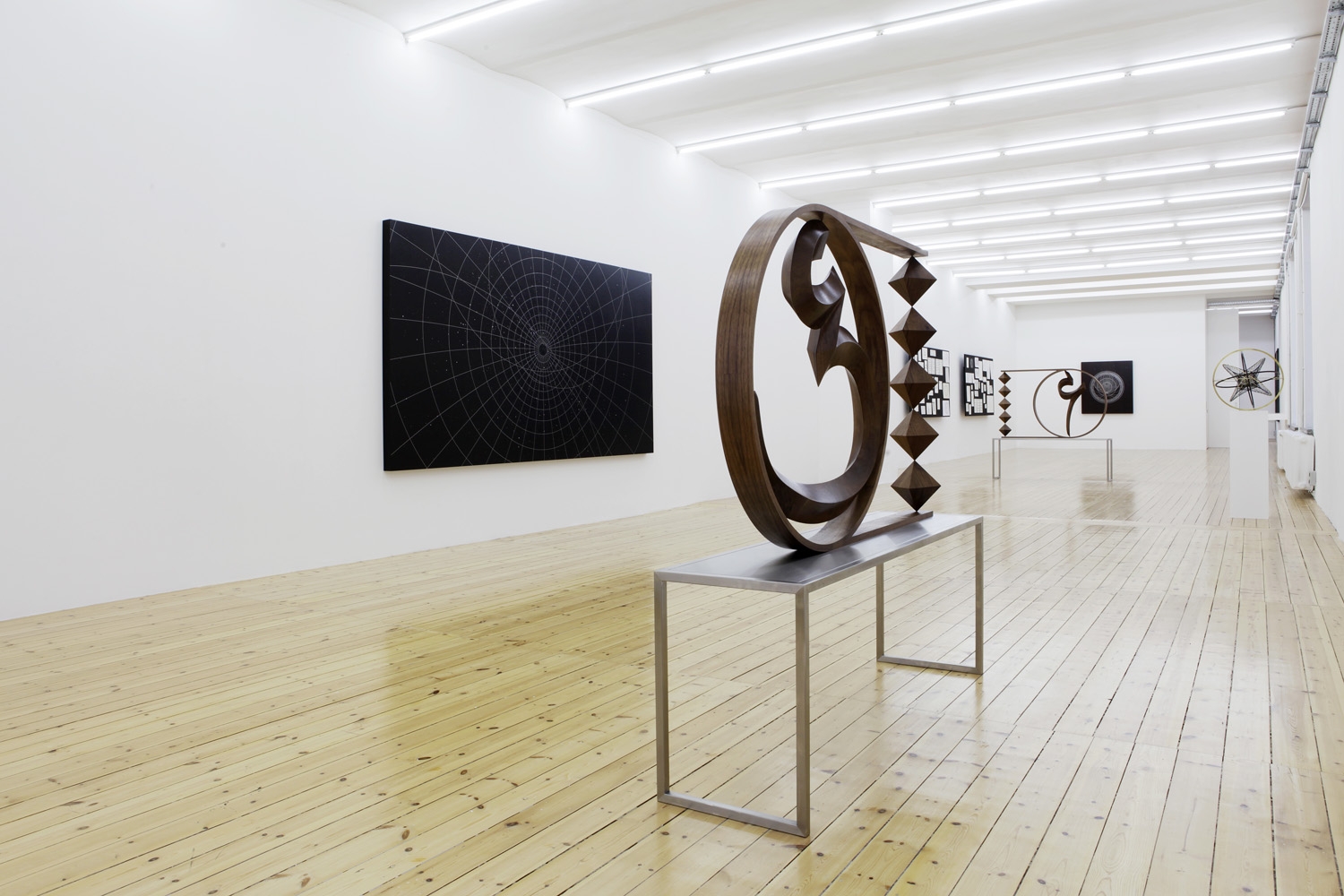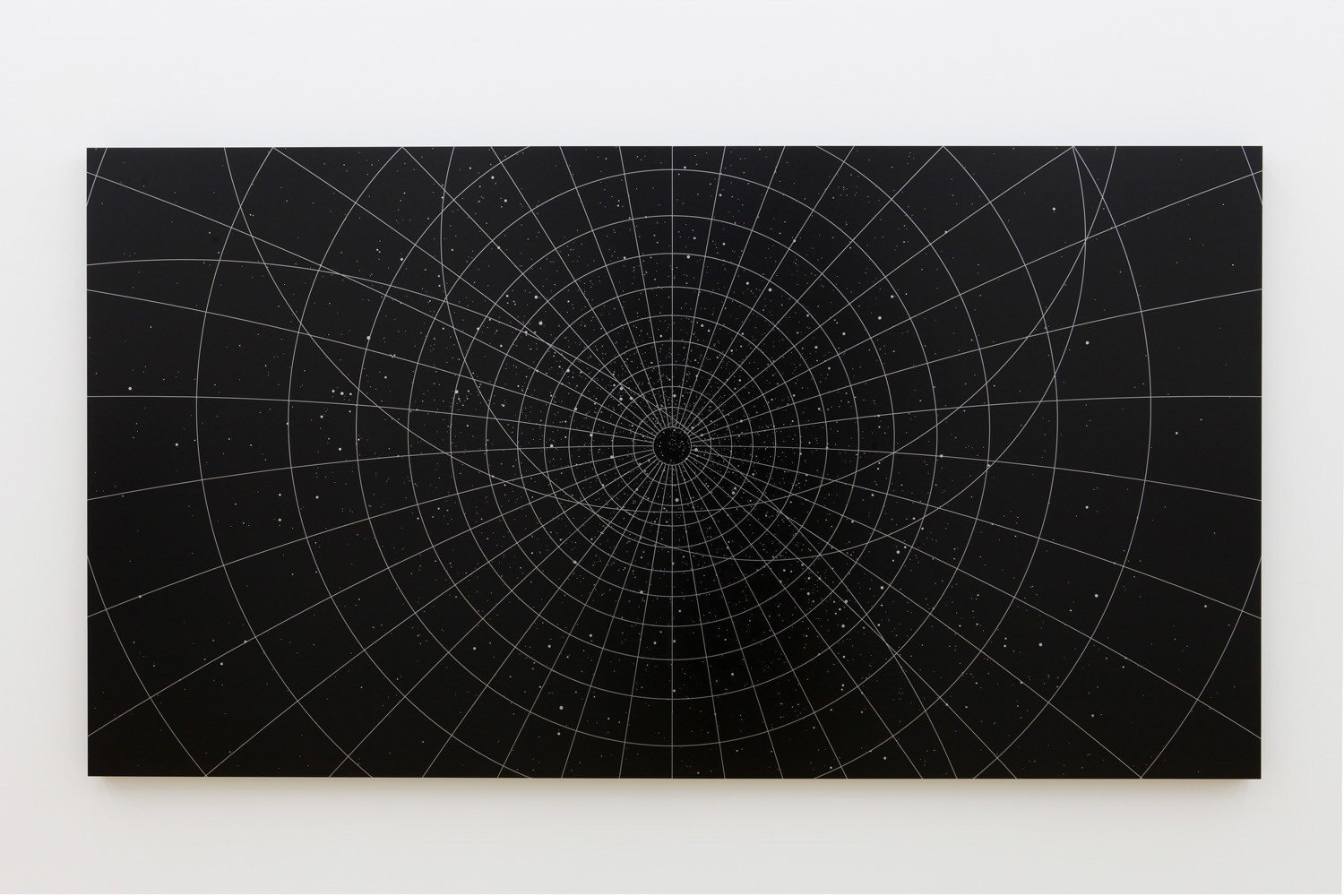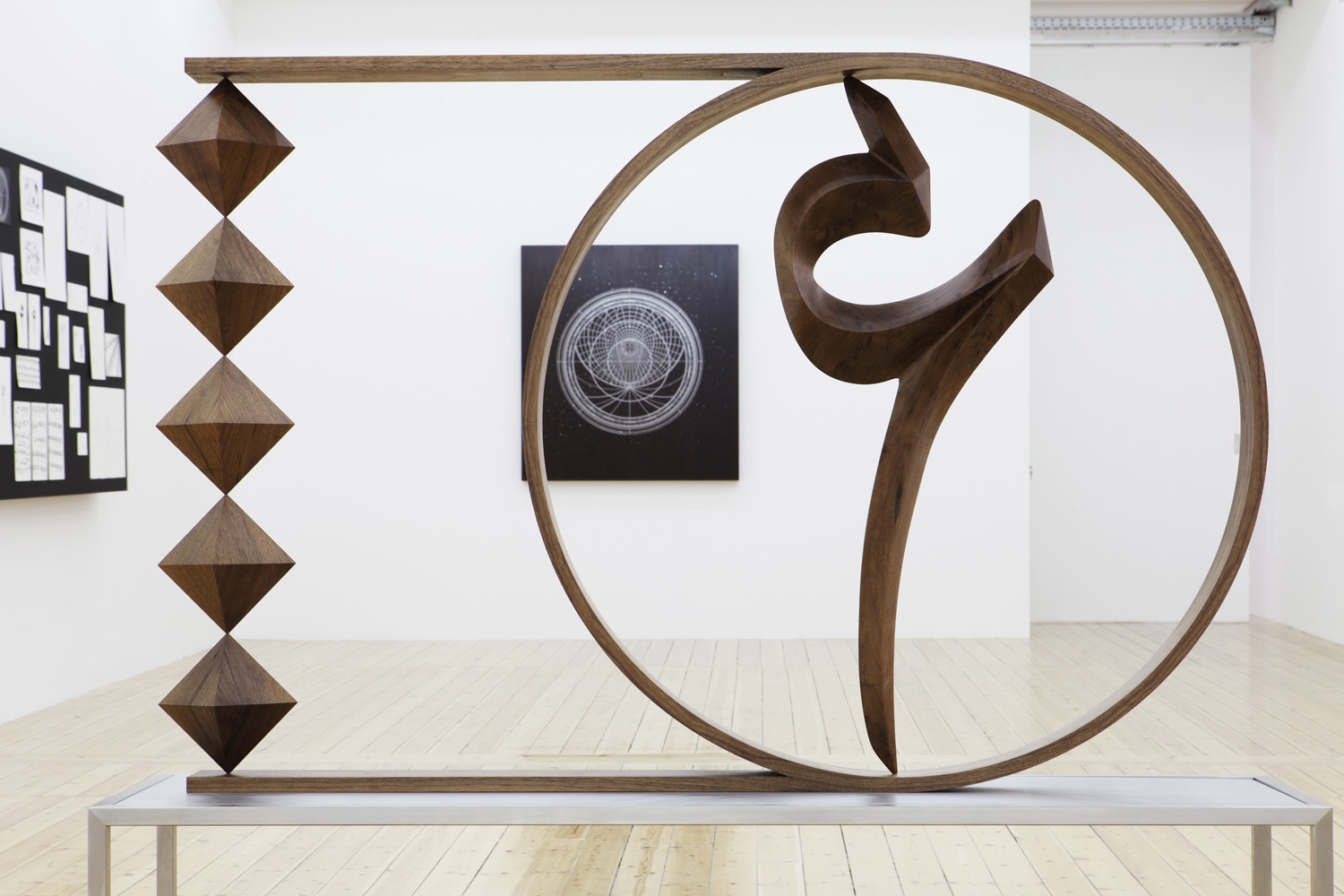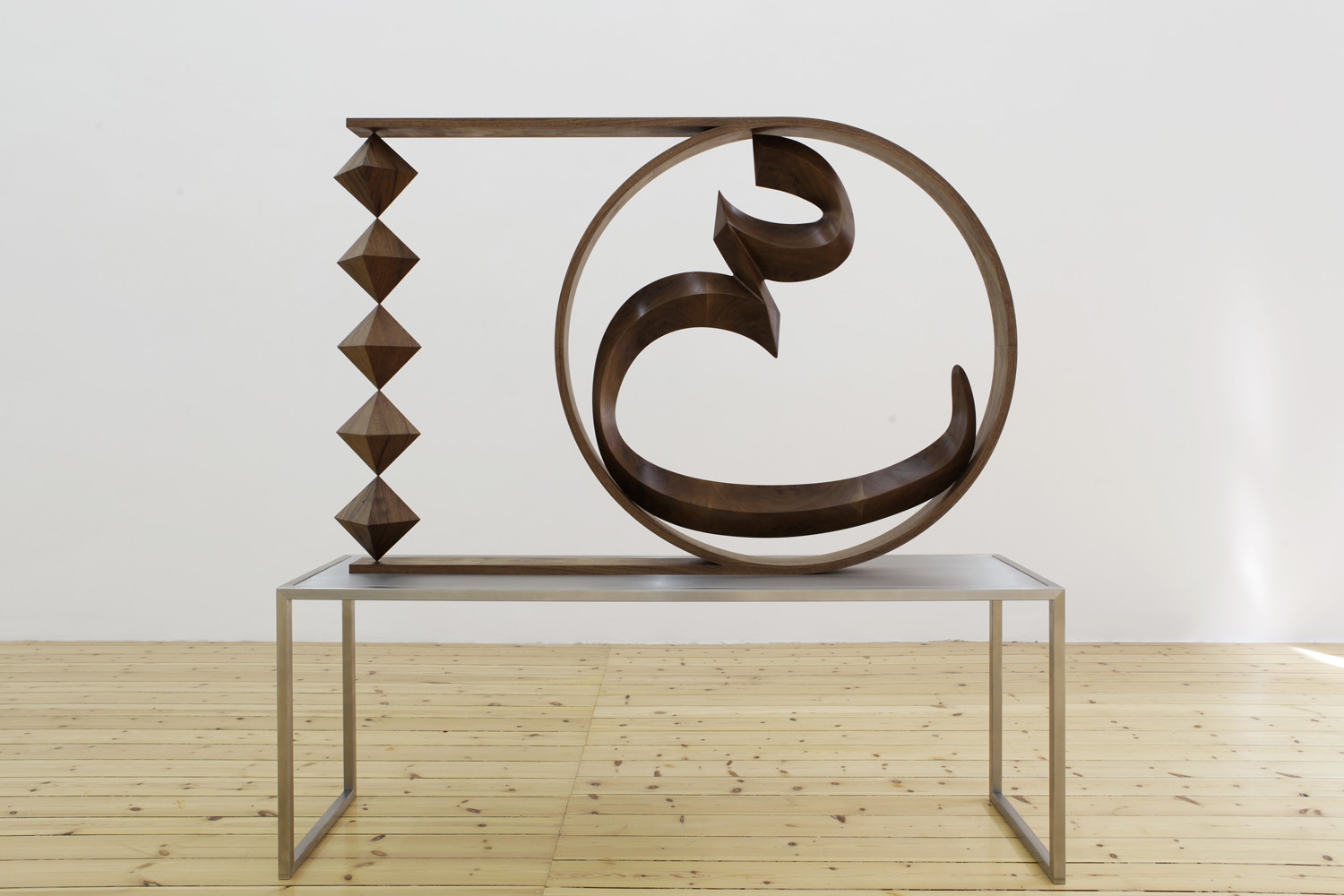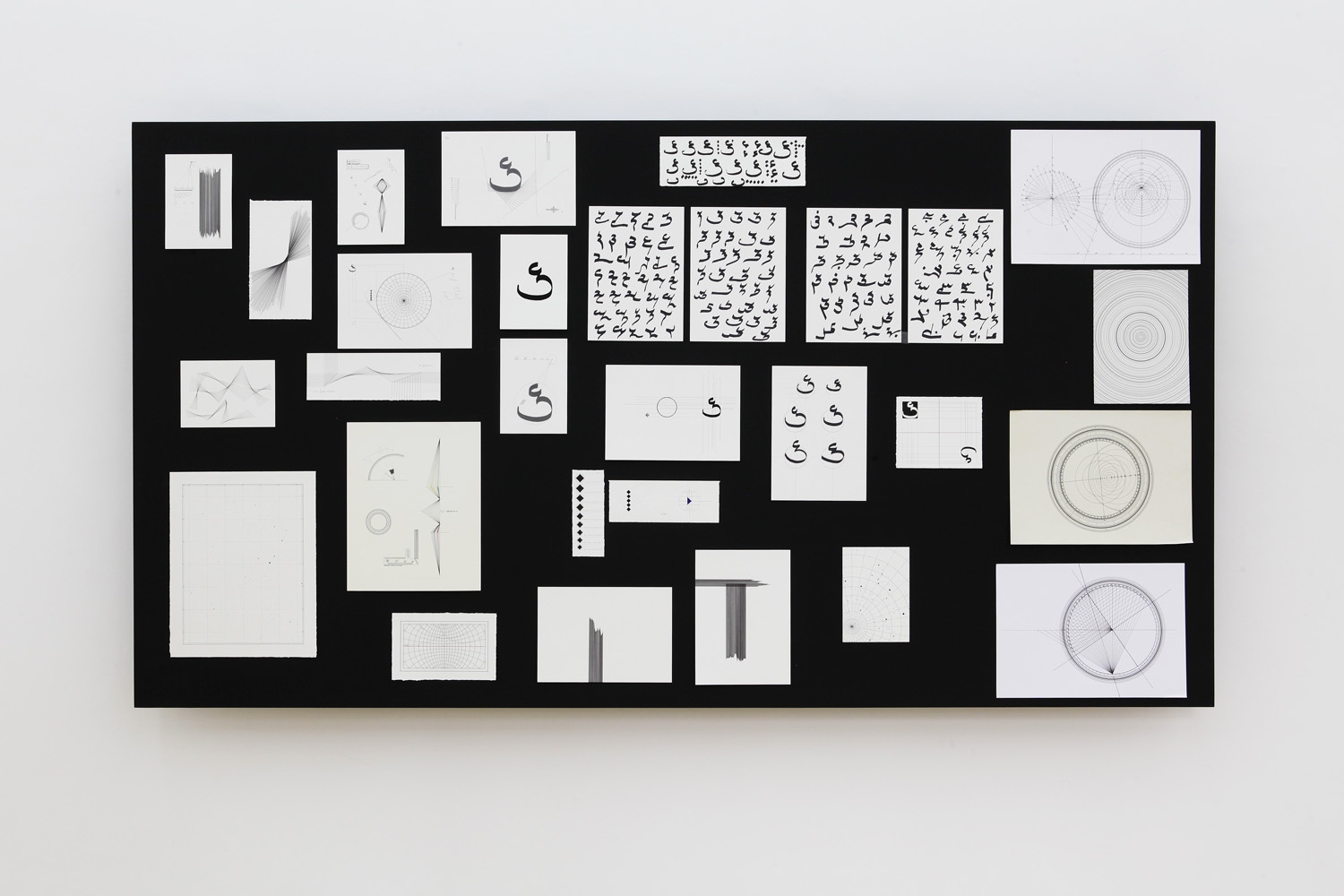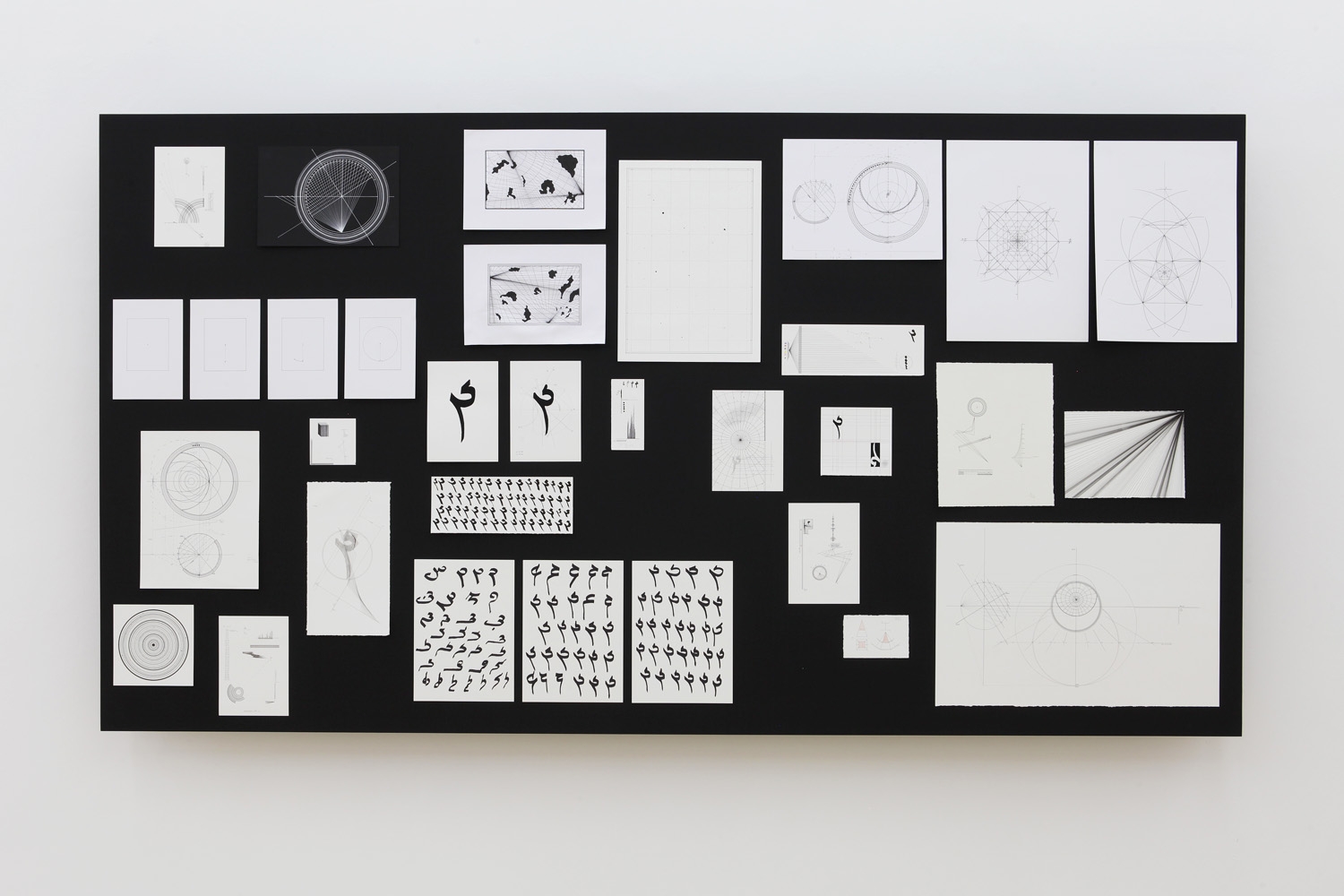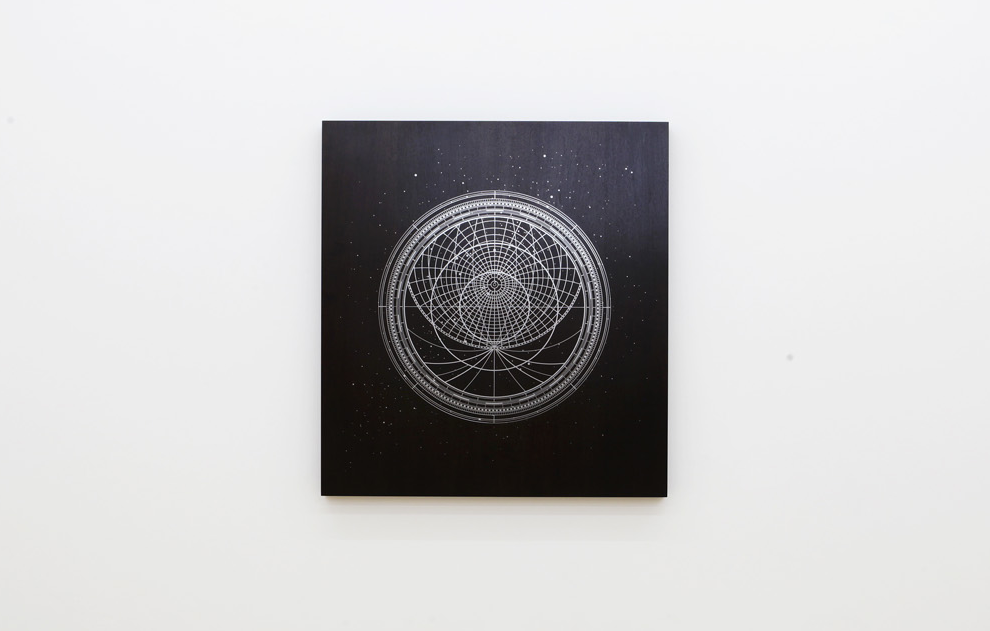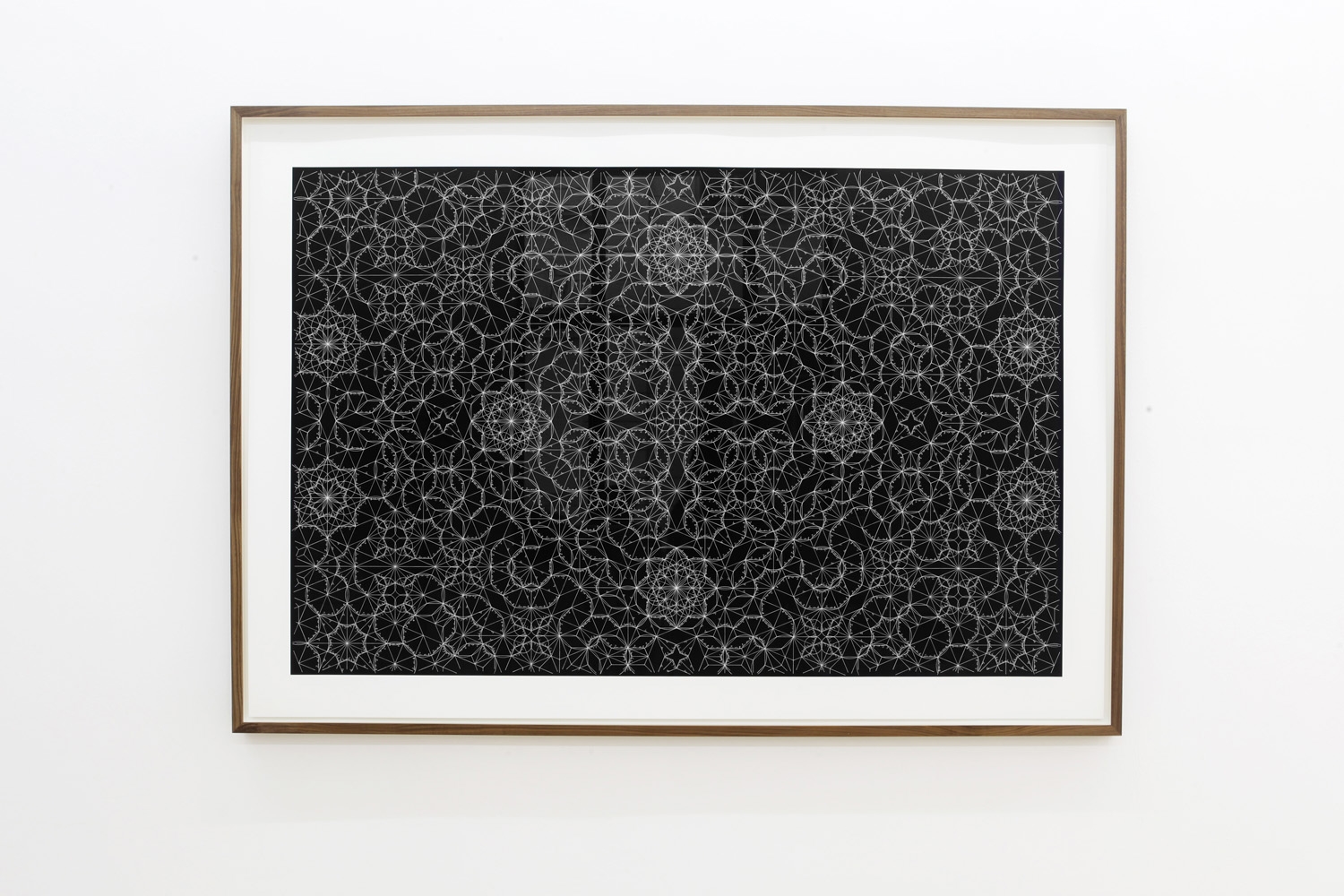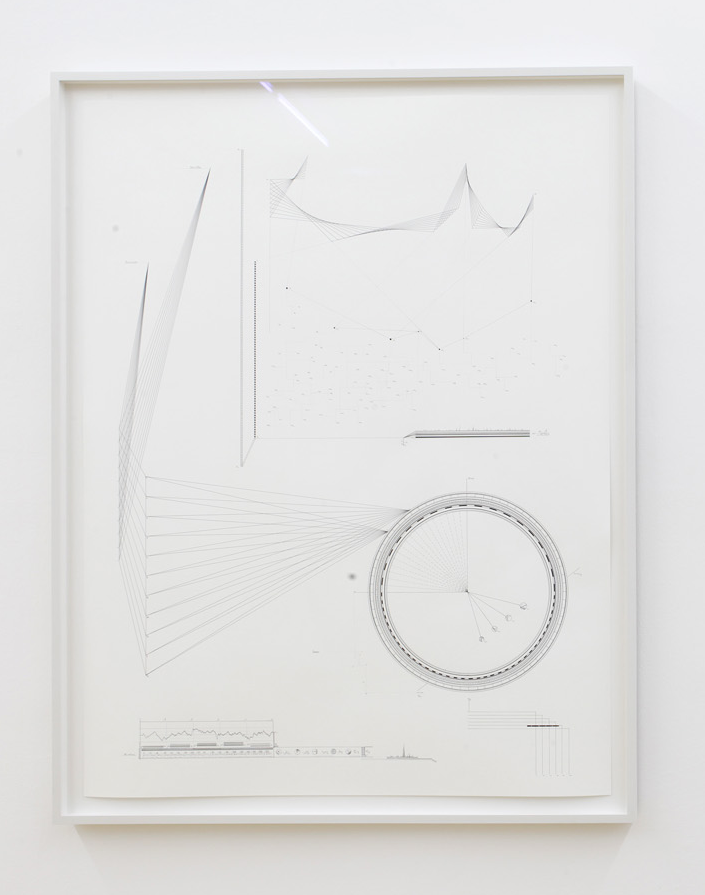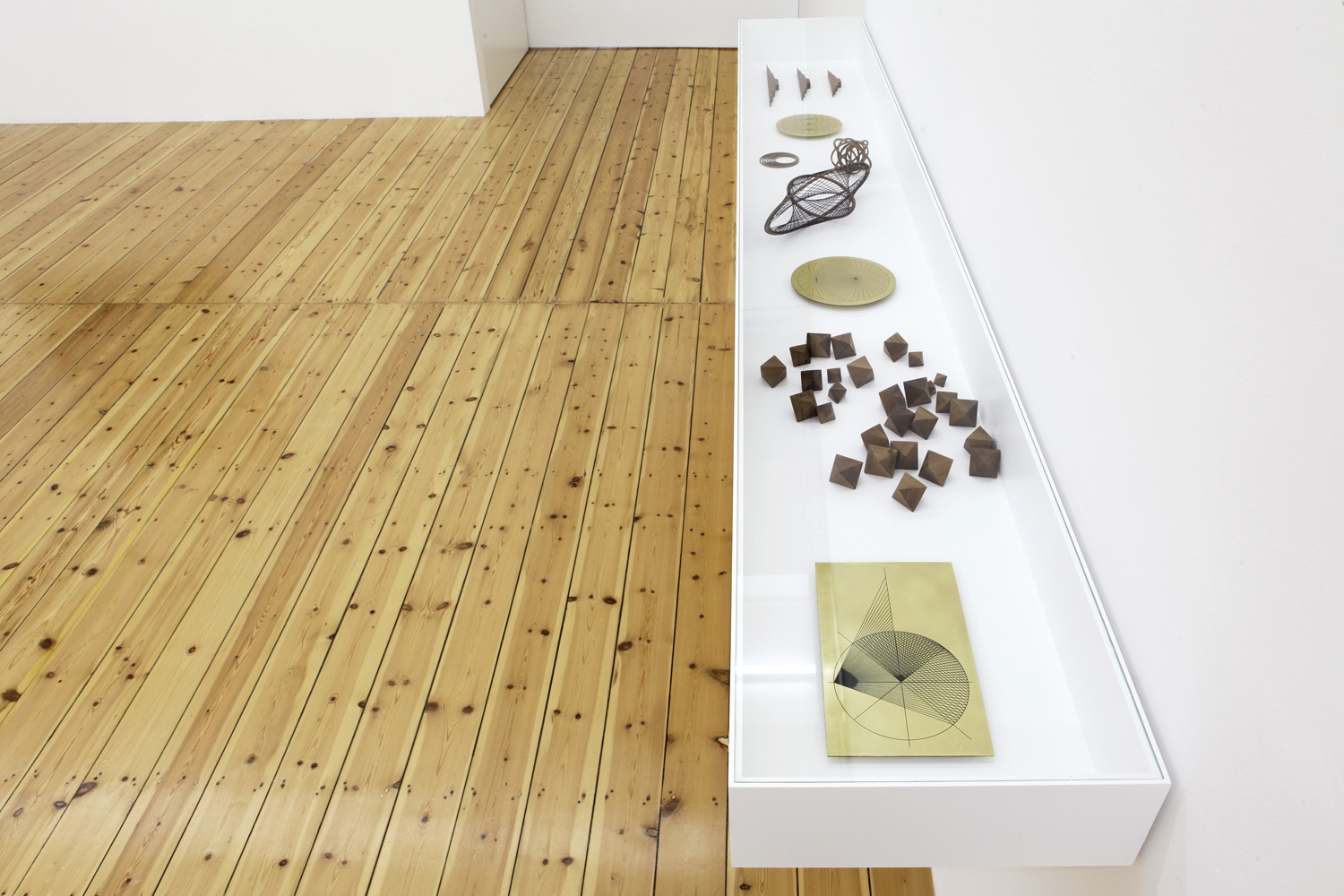Timo Nasseri , Barbara Camilla Tucholski-Gallery
As an artist, Barbara Camilla Tucholski takes on the role of a bystander with an intense observation and an eye for details. For her new exhibition “Straßen”, planned exclusively for Gallery Sfeir-Semler, Hamburg, she will be showing five sequential drawing cycles, which emerged from different locations of biographical significance to the artist: Loitz, Ovelgönne, Rom, Wien, Berlin.
Her drawings alternate between the partly edgy, partly smooth, precise lines, forming delicate networks and curves. With only a few strokes the observed comes to life through pencil on paper, with pointed precision that reveals its essence. Tucholski’s drawings are the embodiment of her ways of seeing and perceiving; they are the outcome of her bearing witness to the complex thematic links between space, homeland and identity. The artist develops in her drawings a unique way of seeing, leaving the established central perspective behind in favour of a multi-layered connection between sites and vanishing points. The exhibited drawings in “Streets” show a direct and intimate personal bond with space and time as a counterpoint to the detached and impersonal virtual reality of the digital age.
Barbara Camilla Tucholski was born in Loitz, Western Pomerania, in 1947. The division of Germany forced the family to flee to the West. The artist studied at the art academy in Düsseldorf (Kunstakademie Düsseldorf) and at the University of Bonn.
She exhibited, inter alia, at the Albertina in Vienna, at the Drawing Center New York, at the art collection Schwerin, at the Kiel art museum, at the Bonner Kunstverein, the Morat Institute at Freiburg, the art museum Rostock, the Kunstmuseum Düsseldorf and at the Fiac Picardie, Amiens. Her works are represented in numerous exhibitions.
TIMO NASSERI
The more beneath my feet the skies I see
Timo Nasseri (*1972) uses the means of natural science to open up a perspective for the poetic and fantastic.
The life and teaching of Ali Muhammad bin Hassan bin Muqlas, also known as Ibn Muqla (Bagdad, born in 885/6), inspired the artist for his exhibition The more beneath my feet the skies I see, a show conceived for Sfeir-Semler Gallery Hamburg.
Ibn Muqla was a noted calligrapher and is widely known as a scholar of the Arabic alphabet. His system of writing with points as basic elements is still valid till this day. Some latin letters do not have an Arabic equivalent. Thus Ibn Muqla’s intent was to create these missing letters: a P, an O, an E and a soft W.
But his wish to reform the alphabet was considered a blasphemy by religious leaders of the time as they believed the Arabic language was Allah’s creation and should not be altered by human hands.
And so the hand of the greatest calligrapher ever known to man was severed, though he never revealed his letters. He would found a school later on, only to have his tongue cut off in order to keep him from teaching and was kept in isolation for five years in a house outside the city until his death.
Inspired by Ibn Muqla, Nasseri started an in-depth research on Arabic writing and alphabet, giving particular attention to forms and aesthetics. He practiced lettering to be able, as Ibn Muqla did, to add the missing letters to the alphabet. Ibn Muqla derived the missing letters from star constellations in 934, so the artist followed suit. This was based on an earlier reformation of the writing around 700 first using a point system. Ibn Muqla assumed that the points were derived from the starry sky, and served as guides to one’s path.
A monumental blackboard with steel inlay on wood dominates the exhibition and refers to the first reform, reaching for the stars, to a metaphysical and surreal dimension. In a second inlay work the artist reconstructs the night sky above Bagdad in spring 934 using a specialized computer software. Working with the maps and astronomical measuring tools from that period, the artist tried to get closer to the form of the missing letters. This process is made visible through a variety of ink on paper drawings, creating a sort of ‘mind map’. The final steps of the reconstruction are two large wooden sculptures, each showing one of the missing unknown letters.
Timo Nasseri’s works discuss the infinity and boundlessness, transcendence and metaphysics in a wider context and writing as the beginning and the end.
